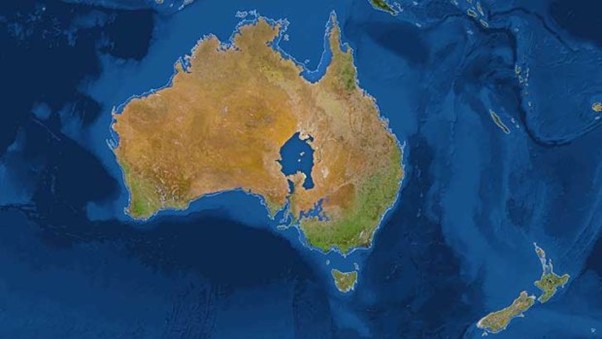
Dr. Marji Puotinen
Questions answered by this expert
Over time, if we do nothing to slow or reverse climate change, the average Earth temperature could rise by 8 degrees Celsius or more! This would eventually cause changes so profound that if you were an astronaut orbiting our planet, you’d be able to clearly see with your eyes the changes from space. This is ironic because the pollution we are creating that is causing the Earth to warm (mostly carbon dioxide, but also methane and other ‘greenhouse’ gases) is largely invisible. That means we can’t actually look up into the sky and see how this pollution is building up in our air – but watch this clever video that let’s you see how quickly carbon dioxide builds up in just one city (New York) from our everyday human activities! The main reason why climate is changing is that the pollution created from burning petrol, gas and coal to generate energy for humans is making our atmosphere increasingly effective at trapping energy from the sun on our planet at night rather than letting it escape back into space (see picture below). It is like each new year’s worth of pollution is adding more and more blankets to our atmosphere – gradually overheating the Earth.

Imagine that you are an astronaut orbiting the Earth. How does the Earth look now? And how would what it looks like change by 2050 if we do nothing to slow or reverse climate change? Let’s explore two examples.
One thing that really makes our earth stand out are its colours. Bright blue for the ocean, brown and greens for the land. And – at the north and south pole and surrounding areas (the polar regions) – bright white from the large areas of ice. The North Pole is surrounded by the Arctic Ocean so this ice is frozen sea water. The South Pole is actually on land (in Antarctica) so this ice is frozen fresh water. In fact, 70% of the world’s fresh water is frozen in ice sheets and glaciers! What happens to ice when the water or air around it gets warmer? It melts, of course! You can try this at home. Put an ice cube in a glass. Time how fast it melts when left at room temperature versus heated in the microwave, or when put in cold versus hot water. So far, the average earth temperature has risen by about 1.2 degrees Celsius and ice is melting at a rapidly increasing rate in both the Arctic and Antarctica. If the average Earth temperature rises by 8 degrees or more, from space you would notice that the white icy areas around the poles would drastically shrink in size. In the Arctic, they’d turn dark blue (what water looks like from space). In the Antarctic, they’d turn brown or green (land). See before and after pictures of this here. What does ice turn into when it melts? You got it – water! What do you think would happen to the oceans if more and more water gets added to them? The sea level will have to rise, of course. This means that land areas around coastlines that are currently not very high above sea level would end up under water. By 2050, this could include many of the world’s largest cities like Jakarta in Indonesia, Lagos in Nigeria and even New York City! And spare a thought for small island nations around the world who currently live less than 1 metre or so above sea level – their homes would completely disappear. What would this mean for you and where you live in Australia (see example below if all ice on earth melted)?
Find out what it means for you and where you live- put in your address and see whether your house would flood under different levels of sea level rise here. From space, if you could close your eyes and see 2022 and then close them again and see 2050, you’d notice that the shape and size of the land areas of Earth would change – smaller land areas and more ocean. Less brown and green and more blue.
These changes to how the Earth looks (less white due to ice loss at the poles, more blue and less brown as sea levels rise) are dramatic by themselves but also have further consequences for global weather especially extreme events like drought, floods, bushfire, heat waves and storms, which you can explore yourself or with your teachers.
If this makes you anxious, please know that people all over the world are working as hard as possible to convince leaders to act to slow and reverse climate change. It’s not too late to change the ending to this story. For example, 2,629 kids from 33 countries drew pictures of trees as a way to help cool the earth and a tree was planted for each of them. A giant banner of these drawings is being filmed at schools and in forests all over the world (https://www.kidscareaboutclimate.org) and a video of this will be shown at COP27 in the Australian Pavilion during the United Nations climate change meeting this month!!











